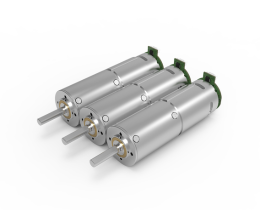Why Your Next Project Needs a Variable Speed Gear Reduction Motor (And How to Pick the Right One)
Let’s talk about something that doesn’t get enough spotlight but quietly powers half the machines around you: variable speed gear reduction motors. Imagine a device that’s part marathon runner, part precision artist—adjusting speed on the fly while maintaining torque like it’s no big deal. That’s what these motors do, and if you’ve ever wondered why they’re the Swiss Army knives of industrial motion control, keep reading.
.webp)
The “Why” Behind the Hype
A contractor once told me, “I don’t care about specs—I care about stuff that works.” Fair point. Variable speed gear reduction motors aren’t just about moving parts; they’re about adapting. Need to slow down a conveyor belt without losing power? Check. Want to optimize energy use in a HVAC system? Double-check. These motors thrive in chaos, turning “variable conditions” into a solved problem.
Q: What’s the biggest myth about these motors?
A: That they’re high-maintenance divas. Truth? Modern designs are like that reliable friend who shows up on time. Sealed housings, corrosion-resistant materials, and smart thermal management mean they’ll outlast your last three phone chargers.
The Quiet Game-Changer
Here’s the thing: efficiency isn’t flashy. A motor that cuts energy waste by 15% won’t make headlines, but over a year? That’s a vacation fund. Take KPOWER’s latest models—built with hybrid cooling systems and adaptive algorithms. One user joked, “It’s like the motor reads my mind. Too fast? Slows down. Overheating? Cools itself. I just stand there.”
When “One-Size-Fits-All” Fits Nothing
Ever tried using a hammer for a job that needed a scalpel? Gear reduction motors avoid that mess. Their variable speed capability means they’re as comfortable in a slow-precision robotics arm as they are in a high-torque mining drill. No more swapping motors for different tasks—just adjust, engage, and forget.
Q: What’s the secret sauce for longevity?
A: Two words: balanced load. These motors distribute stress evenly, like a chef slicing sushi. No single component gets overworked, which means fewer breakdowns and less downtime. Pair that with routine checks (10 minutes a month, max), and you’ve got a workhorse that ages like fine wine.
The Unspoken Perk: Noise Control
Nobody likes a screeching machine. Older motors sound like a blender full of rocks, but newer variable speed models? More like a whisper in a library. Reduced vibration + precision gearing = quieter operations. Perfect for settings where noise isn’t just annoying—it’s a dealbreaker (looking at you, medical labs and boutique factories).
Final Thought: Future-Proofing Isn’t Optional
The world’s shifting toward smarter, leaner tech. A variable speed gear reduction motor isn’t just a purchase; it’s an upgrade to how you work. Less energy waste, fewer replacements, and the kind of adaptability that keeps you ahead of curveballs.
Still on the fence? Think of it this way: in five years, “fixed speed” might sound as outdated as dial-up internet. Time to get with the program—quietly, efficiently, and without breaking a sweat.


































.webp)

